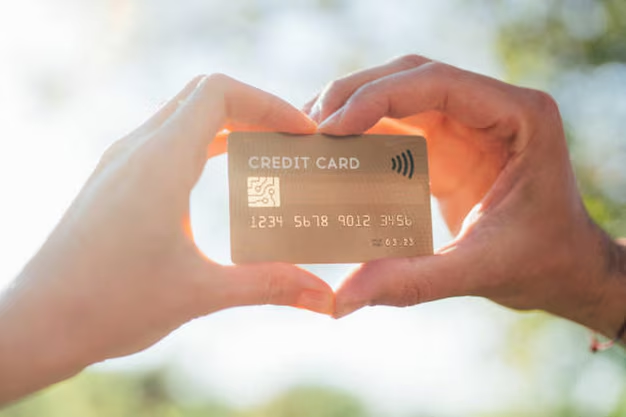Breaking Free from Credit Card Debt: Strategies and Insights
Credit card debt can be an overwhelming burden that weighs heavily on both your finances and your peace of mind. But the good news is, with the right strategies and determination, you can effectively manage and even eliminate this debt. Ready to turn over a new financial leaf? Let’s dive into proven methods to break free from credit card debt, offering practical steps and insightful advice along the way.
🔍 Understanding Credit Card Debt
Before tackling the debt, it’s crucial to understand its nature. Credit card debt accumulates when you spend more on your card than you can pay off each month. High interest rates often exacerbate this, leading to a debt cycle that can seem endless.
The High-Interest Trap
Credit cards typically charge high interest rates on outstanding balances. If you're only making minimum payments, a significant portion goes toward interest rather than reducing the principal debt. Thus, breaking the cycle requires strategies beyond just minimum payments.
🛠️ Strategies to Eliminate Credit Card Debt
Let’s explore effective strategies that can help you take control of your credit card debt and work toward a debt-free future.
1. Create a Realistic Budget
- Assess Your Situation: Start by listing your income sources and monthly expenses. Identify essential and non-essential expenditures.
- Set Spending Limits: Allocate a portion of your income toward debt repayment while ensuring you can cover basic living expenses.
- Track Spending: Use apps or a spreadsheet to monitor every expense, staying accountable to your budget.
2. Choose a Debt Repayment Strategy
Debt Snowball
Focus on paying off the smallest debt first while making minimum payments on others. This approach can provide psychological wins as debts are cleared, motivating continued progress.
Debt Avalanche
Prioritize paying debts with the highest interest first. Although slower to see initial results, this method can save money in interest payments over time.
3. Negotiate Your Interest Rates
Call your credit card provider and request a lower interest rate. Credit card companies are sometimes willing to negotiate to retain customers. Lower rates reduce the cost of carrying debt, speeding up the repayment process.
4. Consider a Balance Transfer
A balance transfer involves moving your debt from a high-interest credit card to one with a low or zero APR introductory rate. Be mindful of transfer fees and the duration of the introductory rate.
5. Consolidate Your Debt
If you have multiple debts, consider consolidating them into one with a personal loan or a debt consolidation program. This simplifies payments and may offer a lower interest rate.
📈 Building a Payment Plan
Having a plan is key. Here’s a basic framework to develop your personalized payment plan:
- List all Debts: Include interest rates and the minimum and current payments for each.
- Choose Method: Decide whether the snowball or avalanche method suits your circumstances best.
- Determine Extra Payment Amount: Calculate how much extra you can afford to pay each month.
- Timeline: Set a realistic timeline based on your chosen strategy and payments. Adjust as needed.
📋 Quick Tips for Managing Debt:
- 📆 Automate Payments: Set automatic payments to prevent missed due dates.
- 🤝 Seek Professional Help: Consider consulting a credit counselor for personalized advice.
- 💰 Emergency Fund: Build a small emergency fund to avoid relapsing into debt for unexpected expenses.
💡 Developing Financial Habits for Success
Breaking free from credit card debt also involves fostering healthy financial habits that prevent future debts. Here are some important practices:
1. Spend Wisely
Adopt a mindful spending habit. Ask yourself if a purchase aligns with your financial goals before proceeding.
2. Save Regularly
Aim to save a portion of your income consistently. Even a small amount can accumulate significantly over time.
3. Avoid Impulse Purchases
Avoid temptation by planning ahead and creating shopping lists. Delaying a purchase decision can help gauge its true necessity.
🤔 Common Concerns and Solutions
Let’s address some common concerns about managing and eliminating credit card debt.
What if Unexpected Expenses Arise?
An emergency fund acts as a buffer, preventing the need to rely on credit cards for unexpected expenses like medical emergencies or car repairs.
Can I Use Credit Cards Responsibly?
Absolutely! Credit cards offer perks and rewards when managed wisely. Pay off your balance in full each month to enjoy these benefits without incurring debt.
How Do I Stay Motivated?
Track progress regularly and celebrate small victories. Knowing you’re closer to achieving financial freedom can be a powerful motivator.
🌟 Summary: Key Steps to Freedom from Credit Card Debt
Here's a quick look at the essential steps for managing credit card debt effectively:
- 🎯 Set Clear Goals: Define what financial freedom looks like for you.
- 📊 Monitor Finances: Keep track of income, expenses, and debt.
- 🏔️ Choose a Strategy: Decide between snowball or avalanche based on your preferences.
- 📞 Negotiate Rates: Lower interest rates whenever possible.
- 🔄 Consider Consolidation: Simplify payments with balance transfers or consolidation loans.
- 💾 Build Habits: Spend wisely and save regularly to maintain financial wellness.
Embarking on this journey requires patience and discipline, but the rewards are well worth the effort. As you chip away at your debt, you're not only clearing financial obligations but also paving the way to a stress-free financial future.
Embrace each step with resilience, and soon, you’ll find yourself enjoying the liberation that comes with being debt-free. Remember, financial health is a continuous journey, and with the right mindset and strategies, you’re equipped to conquer any challenge.

Related Topics
- a Credit Card
- Am Eagle Credit Card
- Are Airline Credit Cards Worth It
- Are Credit Card Points Taxable
- Are Credit Card Rewards Taxable
- Can a Credit Card Company Sue You
- Can a Debit Card Be Used As a Credit Card
- Can a Money Order Be Paid With a Credit Card
- Can a Secured Credit Card Build Credit
- Can Credit Card Companies Garnish Your Wages